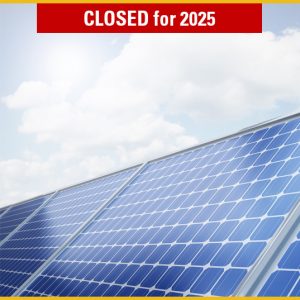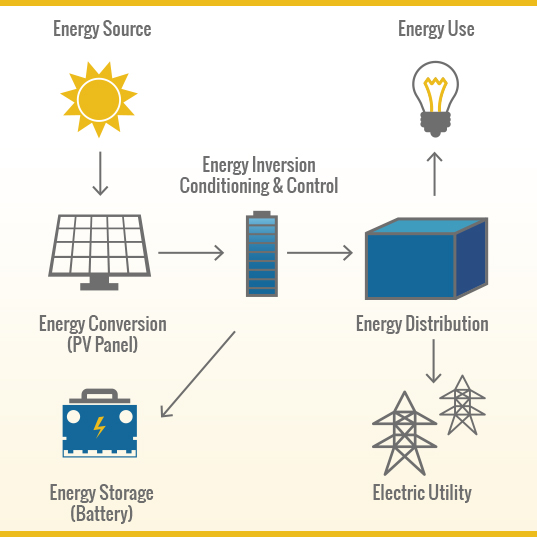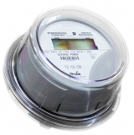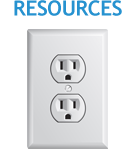
Solar Photovoltaic Program
Solar Power Technology
Effective immediately and pursuant to our Distributed Generation program policies, Diverse Power Inc. will not be purchasing any new excess power from our members until further notice. All current members, already a part of our program, will continue on in the program. This notice is in standing with The GA. Cogeneration and Distributed Generation Act, GA Code 46-3-56 and is highlighted on Page 5, Section E of our Distributed Generation Policy; It reads:
E. Obligations to Purchase Excess Net Energy
When the electricity generated by the Customer Generator’s distributed generation facility exceeds the electricity supplied by the Cooperative during the billing period, the Customer Generator shall receive payment for the excess net energy pursuant to the Cooperative’s Net Metering Service, Rider NM-1. However, the Cooperative will only be required to purchase such energy from Customer Generators on a first-come, first-served basis until the cumulative generating capacity of all the Customer Generators’ renewable energy resources equals 0.2 percent of the Cooperative’s annual peak demand in the previous year.
Diverse Power Inc. has evaluated our peak demand from 2023. Based on our peak and in keeping with our Distributed Generation Program policies, Diverse Power Inc. will not be purchasing any additional excess power for 2024. Members are free to submit new applications and these will be kept on file for the future.
.
Helpful Documents
Distributed Generation Policy
Application for Interconnection
LET’S LOOK AT THE MANY BENEFITS OF PV
- It’s highly reliable and needs little maintenance.
- PV solar cells are an environmentally safe technology that converts sunlight directly into electricity.
- By using a renewable source of power, such as sunlight, you help ensure our energy future by tapping into an infinite power supply.
- It’s produced domestically, strengthening our economy.
- It’s modular and thus flexible in terms of size and applications.
- It helps meet the demand and capacity challenges facing many energy service providers.
- It serves both form and function in a building.
COST EFFECTIVENESS
Depending on your specific need and location, there are a number of factors that affect cost effectiveness, including:
- System Size – Because of economies of scale, large systems cost less per watt than small systems.
- Installation Complexity – More complex installations, including mounting systems on racks, working around obstructions or on tile roofs can be more expensive.
- System Production – Installing your system at the optimal orientation and tilt will maximize system production. The more energy your system produces overtime, the lower the cost per kilowatt hour.
- Operation and Maintenance – Compared to other distributed energy technologies, operation and maintenance costs of PV systems are relatively low. Costs may include occasional cleaning of PV modules, regular visual inspections and possible repair or replacement of the inverter and/or components after a number of years.
- Financial Incentives – Federal tax credits and other incentives may be available to help lower the effective costs of investments in PV systems.
PROJECT ECONOMICS
Estimated Project Cost*
To provide 3,150 watts (3.15 KW) of power to a home, the estimated costs associated with purchasing and installing the system is approximately $3.00 per watt or $9,450.00:
*This is an estimated installed cost and is for illustrative purposes only. The actual installed cost of your PV system will vary and will depend on your specific structure, the angle, orientation and size of your system, the need for any additional supporting structures, the quality of your system components and the quality of the installation.
Estimated Project Generation**
Based on the average output of a typical PV system located in Atlanta area, a 3.15 KW system will generate about 5,500 kWh of electricity each year. This represents about one-third of the electrical energy usage of a typical home in Georgia.
**This is an estimated amount of PV produced electricity and is for illustrative purposes only. The actual amount of electricity your PV system produces will vary and will depend on your specific geographic location, the angle, orientation and size of your system, natural variations in the weather and climate, the quality of your system components and the quality of the installation.
Estimated Project Savings***
In this example, the 3.15 KW PV system generating about 5,500 kWh annually will offset electricity costs of about $500 per year, based on today’s electricity rates. Your savings will increase as electricity prices increase in future years.
***This is an estimate of savings and is for illustrative purposes only. Your actual savings will vary and will depend on the amount of electricity actually produced by your PV system and the average cost per KWH normally charged by Diverse Power for this amount of PV-generated electricity had it been supplied by Diverse Power.

Project Cost Summary as of 02/2021
| PV system installed cost ($3.00/watt x 3,150 watts): | $9,450.00 |
| Less Federal Tax Credit (22% of installed cost): | ($2,079.00) |
| Net Project Cost: | $7,371.00 |






